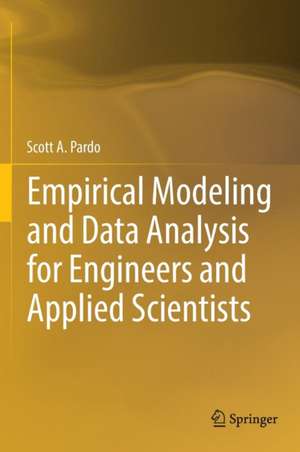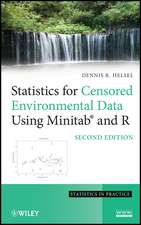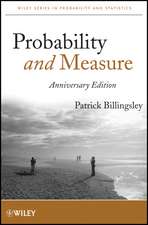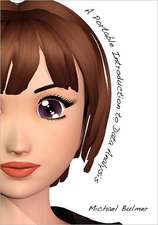Empirical Modeling and Data Analysis for Engineers and Applied Scientists
Autor Scott A. Pardo Contribuţii de Yehudah A. Pardoen Limba Engleză Hardback – 3 aug 2016
While science is about discovery, the primary paradigm of engineering and "applied science" is design. Scientists are in the discovery business and want, in general, to understand the natural world rather than to alter it. In contrast, engineers and applied scientists design products, processes, and solutions to problems.
That said, statistics, as a discipline, is mostly oriented toward the discovery paradigm. Young engineers come out of their degree programs having taken courses such as "Statistics for Engineers and Scientists" without any clear idea as to how they can use statistical methods to help them design products or processes. Many seem to think that statistics is only useful for demonstrating that a device or processactually does what it was designed to do. Statistics courses emphasize creating predictive or classification models - predicting nature or classifying individuals, and statistics is often used to prove or disprove phenomena as opposed to aiding in the design of a product or process. In industry however, Chemical Engineers use designed experiments to optimize petroleum extraction; Manufacturing Engineers use experimental data to optimize machine operation; Industrial Engineers might use data to determine the optimal number of operators required in a manual assembly process. This text teaches engineering and applied science students to incorporate empirical investigation into such design processes.
- Much of the discussion in this book is about models, not whether the models truly represent reality but whether they adequately represent reality with respect to the problems at hand; many ideas focus on how to gather data in the most efficient way possible to construct adequate models.
- Includes chapters on subjects not often seen together in a single text (e.g., measurement systems, mixture experiments, logistic regression, Taguchi methods, simulation)
- Techniques and concepts introduced present a wide variety of design situations familiar to engineers and applied scientists and inspire incorporation of experimentation and empirical investigation into the design process.
- Software is integrally linked to statistical analyses with fully worked examples in each chapter; fully worked using several packages: SAS, R, JMP, Minitab, and MS Excel - also including discussion questions at the end of each chapter.
The fundamental learning objective of this textbook is for the reader to understand how experimental data can be used to make design decisions and to be familiar with the most common types of experimental designs and analysis methods.
| Toate formatele și edițiile | Preț | Express |
|---|---|---|
| Paperback (1) | 529.13 lei 6-8 săpt. | |
| Springer International Publishing – 30 mai 2018 | 529.13 lei 6-8 săpt. | |
| Hardback (1) | 536.81 lei 6-8 săpt. | |
| Springer International Publishing – 3 aug 2016 | 536.81 lei 6-8 săpt. |
Preț: 536.81 lei
Preț vechi: 631.54 lei
-15% Nou
Puncte Express: 805
Preț estimativ în valută:
102.72€ • 111.93$ • 86.56£
102.72€ • 111.93$ • 86.56£
Carte tipărită la comandă
Livrare economică 23 aprilie-07 mai
Preluare comenzi: 021 569.72.76
Specificații
ISBN-13: 9783319327679
ISBN-10: 3319327674
Pagini: 340
Ilustrații: XV, 247 p. 101 illus., 61 illus. in color.
Dimensiuni: 178 x 254 x 16 mm
Greutate: 0.68 kg
Ediția:1st ed. 2016
Editura: Springer International Publishing
Colecția Springer
Locul publicării:Cham, Switzerland
ISBN-10: 3319327674
Pagini: 340
Ilustrații: XV, 247 p. 101 illus., 61 illus. in color.
Dimensiuni: 178 x 254 x 16 mm
Greutate: 0.68 kg
Ediția:1st ed. 2016
Editura: Springer International Publishing
Colecția Springer
Locul publicării:Cham, Switzerland
Cuprins
Preface.- Acknowledgments.- 1. Some Probability Concepts.- 2. Some Statistical Concepts.- 3. Measurement Systems Analysis.- 4. Modeling with Data.- 5. Factorial Experiments.- 6. Fractional Factorial Designs.- 7. Higher Order Approximations.- 8. Mixture Experiments.- 9. Some Examples and Applications.- 10. Binary Logistic Regression.- 11. Reliability, Life Testing, and Shelf Life.- 12. Some Bayesian Concepts.- 13. Validation and Verification.- 14. Simulation and Random Variable Generation.- 15. Taguchi Methods® and Robust Design.- References.
Recenzii
“This book consists of 15 short chapters covering several statistical topics majority in the design of experiments. It is targeted toward engineers and researchers in the area of applied statistics. … The book is more suitable for a course in design of experiment in an engineering curriculum for the readers already exposed to the introductory statistics and probability topics. It is also a good source for researchers in this filed.” (Morteza Marzjarani, Technometrics, Vol. 59 (3), July, 2017)
“The statistical topics covered in this book will be of general utility to a range of quantitative fields. The writing style is a nice hybrid of a conventional mathematics or statistics book, combined with application-driven material more common in engineering or applied science books. … The book features a generous number of computer-generated figures and tables. …this will be a useful textbook for students in the quantitative sciences and in engineering. Summing Up: Recommended. Lower- and upper-division undergraduates.” (M. R. King, Choice, Vol. 54 (7), March, 2017)Notă biografică
Scott A. Pardo, Ph.D., is a professional statistician, having worked in a wide variety of industrial contexts, including the U.S. Army Information Systems Command, satellite systems engineering, pharmaceutical development, and medical devices. He is a Six Sigma Master Black Belt, an Accredited Professional Statistician (PStat™), and holds a Ph.D. in Industrial and Systems Engineering from the University of Southern California.
Textul de pe ultima copertă
This textbook teaches advanced undergraduate and first-year graduate students in Engineering and Applied Sciences to gather and analyze empirical observations (data) in order to aid in making design decisions.
While science is about discovery, the primary paradigm of engineering and "applied science" is design. Scientists are in the discovery business and want, in general, to understand the natural world rather than to alter it. In contrast, engineers and applied scientists design products, processes, and solutions to problems.
That said, statistics, as a discipline, is mostly oriented toward the discovery paradigm. Young engineers come out of their degree programs having taken courses such as "Statistics for Engineers and Scientists" without any clear idea as to how they can use statistical methods to help them design products or processes. Many seem to think that statistics is only useful for demonstrating that a device or processactually does what it was designed to do. Statistics courses emphasize creating predictive or classification models - predicting nature or classifying individuals, and statistics is often used to prove or disprove phenomena as opposed to aiding in the design of a product or process. In industry however, Chemical Engineers use designed experiments to optimize petroleum extraction; Manufacturing Engineers use experimental data to optimize machine operation; Industrial Engineers might use data to determine the optimal number of operators required in a manual assembly process. This text teaches engineering and applied science students to incorporate empirical investigation into such design processes.
- Much of the discussion in this book is about models, not whether the models truly represent reality but whether they adequately represent reality with respect to the problems at hand; many ideas focus on how to gather data in the most efficient way possible to construct adequate models.
- Includes chapters on subjects not often seen together in a single text (e.g., measurement systems, mixture experiments, logistic regression, Taguchi methods, simulation)
- Techniques and concepts introduced present a wide variety of design situations familiar to engineers and applied scientists and inspire incorporation of experimentation and empirical investigation into the design process.
- Software is integrally linked to statistical analyses with fully worked examples in each chapter; fully worked using several packages: SAS, R, JMP, Minitab, and MS Excel - also including discussion questions at the end of each chapter.
The fundamental learning objective of this textbook is for the reader to understand how experimental data can be used to make design decisions and to be familiar with the most common types of experimental designs and analysis methods.
Caracteristici
Focuses on methods that can be used with "small" data sets, generally gathered in designed experiments Encourages students to use data intrinsically meaningful to him or her, such as experimental data associated with a thesis or dissertation Completely worked examples of mechanical, electrical, and chemical design problems Also for use in Design for Six Sigma "black belt" courses










